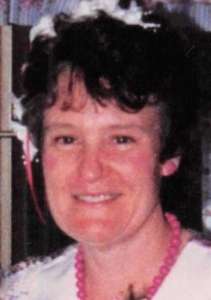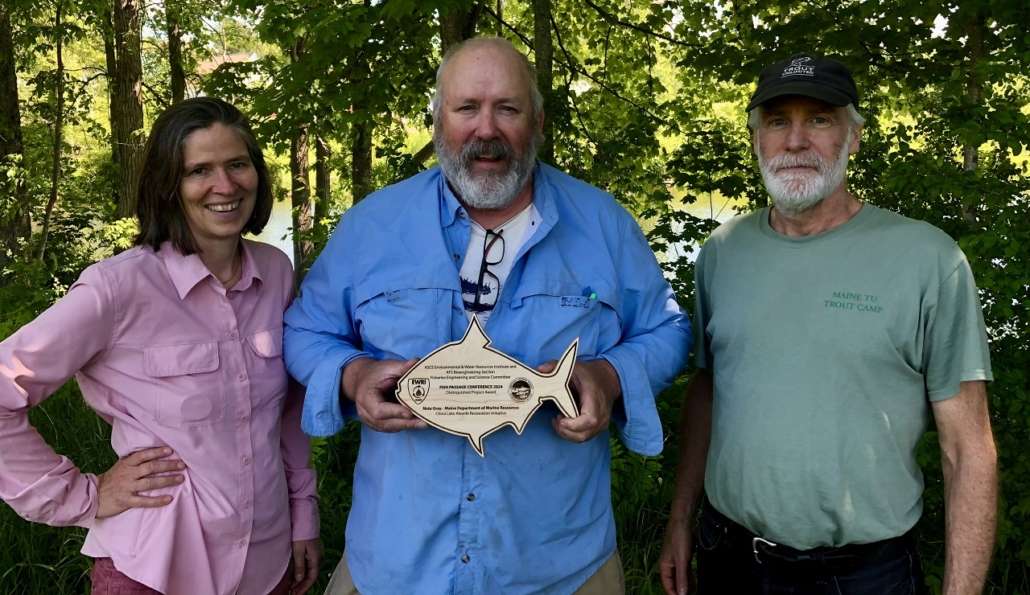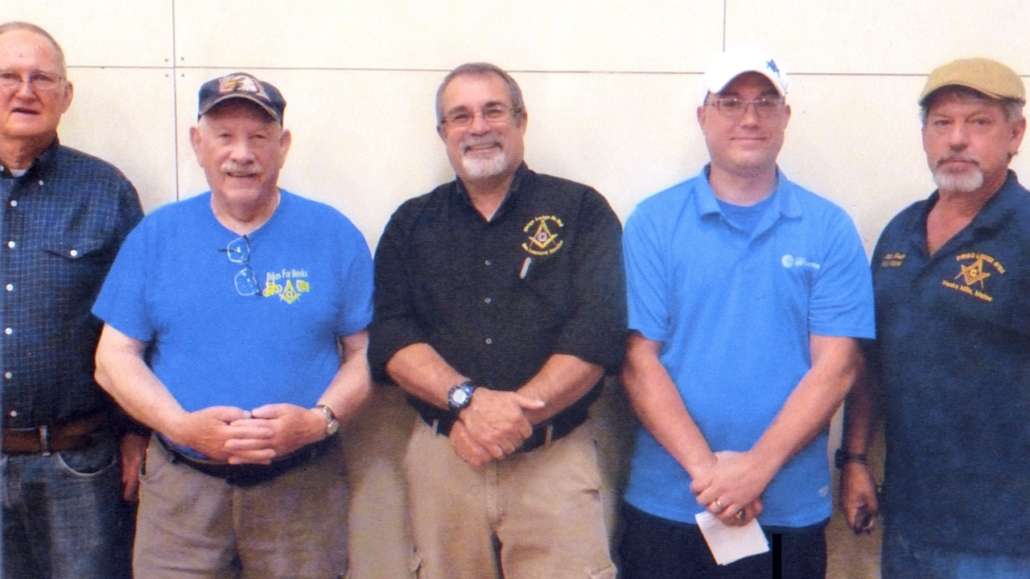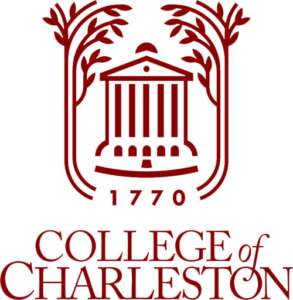Local students named to president’s list at Plymouth State University
/0 Comments/in Benton, China, Jefferson, Oakland, School News/by Website Editor Local students have been named to the Plymouth State University president’s list for the spring 2024 semester, in Plymouth, New Hampshire. Named were:
Local students have been named to the Plymouth State University president’s list for the spring 2024 semester, in Plymouth, New Hampshire. Named were:
Dylan Flewelling, of Oakland. Flewelling is a exercise and sport physiology major.
Joscelyn Gagnon, of Benton. Gagnon is a music education (K-12) major.
Kaiden Kelley, of South China. Kelley is an art and design major.
Abigail Sewall, of Jefferson. Sewall is a nursing major.
OBITUARIES for Thursday, July 4, 2024
/0 Comments/in Obituaries/by Website EditorNANCY E. CARON
 AUGUSTA – Nancy Edith Caron, 78, passed away on Thursday, June 20, 2024, at the Maine Veteran’s Home, in Augusta. Nancy was born on January 15, 1946, a daughter of Edward and Anna-Lee (Cross) Littlefield.
AUGUSTA – Nancy Edith Caron, 78, passed away on Thursday, June 20, 2024, at the Maine Veteran’s Home, in Augusta. Nancy was born on January 15, 1946, a daughter of Edward and Anna-Lee (Cross) Littlefield.
She grew up in Morrill, and was a graduate of Crosby High School, in Belfast. Following school, Nancy worked on a potato farm before becoming employed at Togus VA in the food service department. While at Togus, she met her future husband, Alan H. Caron, and on October 10, 1992, the two were married. Together, they shared an extraordinary bond and Alan remained by Nancy’s side every day for the last several years.
Nancy was a natural in the kitchen and enjoyed cooking and baking. Her treats were famous as she was known as the “Whoopie Pie Lady” by the workers at J.C. Stone, who she generously delivered whoopie pies to monthly. She had a green thumb and enjoyed working in her gardens.
Nancy will be remembered for her friendly disposition and kindness to all.
Nancy was predeceased by her parents, and a brother, David Littlefield.
She is survived by her husband of 31 years, Alan Caron; her children, William Cooper, and Jenna Fox; her step-children, Michael Caron and his wife Suzanne, Richard Caron and his wife Malinda, and Robert Caron and his wife Lisa; 11 grandchildren and 3 great-grandchildren; siblings, Mary Moody, and Richard Littlefield and his wife Karen; and many nieces and nephews.
No services are being held at this time. Memorial donations in Nancy’s name may be made to Maine Veterans Home, 35 Hero’s Way, Augusta, ME, 04330. Please write “Activities Dept.” in the memo.
Arrangements have been entrusted to Plummer Funeral Home, 16 Pleasant St., Augusta, ME 04330.
MY POINT OF VIEW: A humanitarian journey to the South Pacific
/0 Comments/in My Point of View/by Gary Kennedy
Gary Kennedy and wife Julie, center, with many of the people they help with their mission. (photo courtesy of Gary Kennedy)
 by Gary Kennedy
by Gary Kennedy
Well, Julie and I just arrived back home from our humanitarian mission in the South Pacific. Our plane trip both going and coming was a literal nightmare which took two days each way. Lay overs were the worst of it, sleeping in airport chairs, etc., is murder on your body.
All my misery being said, the mission was very successful and very satisfying for my wife and I. We left many very happy people wherever we would go. Since we are not paid humanitarians we received our reward from the people we serve. We get to share beautiful children and receive lots of hugs and kisses. That’s worth it all to us. A lollipop can bring about the most beautiful smile you ever would want to see. However, we gave much more than that, thanks to the generosity of folks like you. What was supposed to be a children only event turned out to include entire families.
Our mission this time included three orphanages, a medical clinic, a prison, two libraries, multiple small feeding events and the establishment of a small school at the Knights of Rizal headquarters, in Manila, Philippines. I have many photos and videos which I would be glad to share upon request. We will be doing it all again in December if we raise enough supplies for the events. We already have a couple of people who would like to volunteer. We love the help.
I must warn you once you begin doing these humanitarian missions you become addicted. It’s the most wonderful feeling for those of good heart. I have often wished I was rich so I could do more. I also wonder why those with greater than average means are not involved. Perhaps they don’t realize the natural high that giving to those in need will bring. Oh well, those who do open their hearts receive great rewards. There is so much love out there just waiting to be shared. It’s not what you take with you it’s what you leave behind.
I mentioned in my second paragraph that what we were doing was supposed to be for the children only; well my wife changed all that. We both have soft hearts but hers is perhaps a little more sensitive to situations. She sees things that I sometimes over look. The one example I will share with you is our visit to the indigenous people known as the Aetas Tribe. They are a tribe of people which predate the Spanish occupation of the Philippine Island, before the 1500s.
They are a slight, dark skinned race with dark curly/wavy hair. They are supposedly protected by Philippine government but that protection is very shoddy. Food is not adequate, clothing is bare necessity; very little foot wear, limited school supplies and many were running around naked. It took awhile to have them accept us but with time and lollipops we prevailed.
We prepared massive amounts of food for this visit which was a good thing as there were many people coming out of hiding during our visit. As I stated, this was suppose to be a children’s event. Julie, along with other volunteers we had with us, began passing out Styrofoam plates loaded with food to all the children. We had an interpreter giving instruction to the children about sitting and using the plastic fork and spoons we supplied.
Julie noticed dozens of adults hanging around the outside fence just watching the great food the children were eating. Finally she came to me and said, “honey, I think they are all hungry”. I replied, “Do you think we have enough to feed them all”? Julie replied that we had more than enough, so we invited them in. They were very hungry and very happy. After all were full of food and pineapple juice we gave out the gifts we had with us. We gave all the school supplies for the coming school year and the children all received footwear and some clothing. Before it all ended it was as if we were part of the community. Their translator taught them a little English which they imparted as we said goodbye and went out the gate. The words, “please come back, we love you”, rang out for all to hear. It brought tears to my eyes. What a wonderful parting gift; we will return.
In closing I give a special thanks to all who gave, especially Old Navy and Loots, of Augusta. I would also give a very special thanks to Chris Lemieux at Staples Office Supply, of Augusta, for giving school supplies to 300 children for the year. They will never forget. God bless to all.
EVENTS: Chadwick Cemetery Association annual meeting (2024)
/0 Comments/in China, Events/by Website Editor The Chadwick Hill Cemetery Association will hold its annual meeting on Thurssday, July 11, 2024, at 4 p.m., at the South China Community Church, 246 Village St., South China. New members are welcome. All interested parties are invited to attend. For additional information contact Jiff Zimmerman at 445-4000.
The Chadwick Hill Cemetery Association will hold its annual meeting on Thurssday, July 11, 2024, at 4 p.m., at the South China Community Church, 246 Village St., South China. New members are welcome. All interested parties are invited to attend. For additional information contact Jiff Zimmerman at 445-4000.
TNT Competitive Edge dance team is heading to national competition
/0 Comments/in Community, Fairfield, Sports/by Mark Huard
Hailey Benson age 13; Amelia Benson age 9; Annabelle Tasker age 10; Kirstin Clawson age 10; Sophia Santiago age 13; Jaylenn Cugno age 18; Stella Patterson age 13 and Jayla Jandreau age 13.
by Mark Huard
Competitive Edge Dance Team is a group of young dancers based out of TNT Dance Studio, on the Center Road, in Fairfield. The Studio began as Terri’s School of Dance and was founded by Theresa “Terri” Glidden 50 years ago. It is now owned and operated by Terri’s daughter, Tiffany Glidden, and Jesse Klein. They started competitive dancing 30 years ago when Tiffany was a young child and they have continued to build a strong team of competitive dancers ever since. This year is not any different, as they are setting out to take the stage at Dance Ovations Nationals, on Cape Cod, for the week of June 26 – 30. The team has traveled all over New England this year and qualified for this national competition by competing in the regional event in Stratham, New Hampshire, in early May. They have worked all year and engaged in multiple fundraising events to be able to compete at this level.
Currently eight members strong, the team is comprised of athletes from the age of to 10 to 18. Dance Competitions are broken up by age, skill level and genre. They can compete in solo divisions, small group, large group and duo/trios. The main choreographers for TNT’s Competitive Edge team are Tiffany Glidden, Kali Vashon, and Terri Glidden. The team meets at least weekly as a team to practice their routines, listen to critiques from previous competitions and attempt to perfect technique and gain stamina. To compete on a national stage requires a commitment to excellence, discipline, sacrifice, and perseverance by the coaches and their athletes. Based on the results of the Dance Ovations Regional event, the following dances qualified for a special “Dance On” competition during Nationals, due to their high scoring placements:
Mechanical Dolls (a ballet routine choreographed by Tiffany Glidden for Annabelle Tasker age 10 and Kirstin Clawson age 10); Stepsisters Lament (a musical theater routine choreographed by Kali Vashon for Jayla Jandreau, Hailey Benson, and Stella Patterson, all 13 years old); All Aboard (choreographed by Terri Glidden for Sophia Santiago, Jayla Jandreau, Hailey Benson and Stella Patterson, all age 13) and finally The Letter (choreographed by Kali Vashon for Jaylenn Cugno, age 18, Sophia Santiago, Jayla Jandreau, Hailey Benson, and Stella Patterson, all age 13).
In addition to the qualifying routines, TNT has two dancers that qualified to compete in the Titleist Competition. These dancers – Sophia Santiago, age 13, and Jaylenn Cugno, age 18 – qualified by scoring in the top three of their respective solo divisions. Sophia is a seventh grader at Lawrence Jr. High School, in Fairfield, and is performing an acro/lyrical routine called Butterfly Fly Away that is choreographed by Kali Vashon. Jaylenn is a senior at Skowhegan Area High School, and is performing a contemporary routine called I am What I am, that is choreographed by Terri Glidden. Both dancers will engage in different events throughout the week such as interviews and opening number rehearsals with a large group of top soloists from all over the country.
In addition to an incredible amount of hard work, these dancers can attend these events due to their generous sponsors including: National Level Sponsor: Heavy Machines LLC; Competition Level Sponsors: S&K Heating, RDA Automotive and Zimba Corp; Convention Level Sponsors: Sackett & Brake Survey, Inc., Cappzas Pizza and Mattingly Products Co; Donors: Stan’s Fries, Key Appliance, Freihoffers, Cervesas, Pour House Pub, The Apple Farm, Harvest Moon Deli, Computer Improvements, Rebecca Cayford, ESQ, Rita’s Pizza, Johnny’s Seeds, Emery’s Meats, China Way, Pizza Hut, Autozone, Tin Knocker Signworks, and The Magic of Conjuring Carroll.
Former China Dine-ah to become daycare
/0 Comments/in China, Community, News/by Mary Growby Mary Grow
The former China Dine-ah, on Lakeview Drive (Route 202), which was closed by the pandemic in the spring of 2020, is moving toward becoming a daycare called Grace’s Busy Bees, directed by Grace McIntyre.
McIntyre, building owner Norman Elvin and architect David Landmann described plans to the China Planning Board at its June 25 meeting and received prompt and unanimous approval.
Board members considered the minimal external changes, the lack of impacts on neighbors and the local publicity the change has received and decided no public hearing was needed. They found the plan meets all ordinance requirements.
Board chairman Toni Wall issued the usual reminder that the decision is subject to appeal within 30 days.
The daycare will add a playground behind the building, away from Route 202. Elvin intends to build a six-foot cedar fence between the playground and the neighboring house.
Another change he plans is clearing brush along the road to improve visibility from the driveway.
Landmann said the fire alarm system has been upgraded and additional exits provided. He pointed out that state requirements the building met for a restaurant – like the septic system, which Elvin said had been thoroughly checked recently – were even more strict than requirements for a daycare.
The commercial kitchen in the building will be removed as part of a comprehensive interior renovation. Elvin said before the China Dine-ah opened, the building had been gutted, removing anything that might contain asbestos or lead.
The business needs approval from the state Department of Human Services and the state Fire Marshal. Landmann said both applications are pending.
McIntyre hopes to open Grace’s Busy Bees when school starts in the fall. She has applied for a maximum of 65 children to start, tentatively planning for up to 100 children in the future. Hours will be 6:30 a.m. to 5:30 p.m.
The June 25 planning board agenda included review of two existing ordinances and proposals for three new ones. Board members postponed continued discussion of China’s Land Use Ordinance and an update of the town’s marijuana ordinance.
Also scheduled for future discussion, as Wall and others collect more information and samples from other Maine towns, are:
— A Condemning Places ordinance that would allow town officials to determine a building unfit for human habitation;
— A Mass Gathering ordinance to define and regulate temporary events that draw large crowds; and
— On town attorney Amanda Meader’s recommendation, a Site Plan Review ordinance.
The next China Planning Board meeting is scheduled for Tuesday evening, July 9.
KICK FOR CASS (2024): Annual 11-Hour continuous soccer game planned for July 13
/0 Comments/in Community, Waterville/by Website EditorOver 500 players, including 17 high school soccer teams from around the state, will join the 11-hour, continuous soccer game “Kick For Cass” on Saturday, July 13, at Thomas College, in Waterville. The annual event is held in memory of Cassidy Charette, former midfielder for Messalonskee High School Girls Soccer who wore the #11 jersey before her passing in a tragic hayride accident on October 11, 2014.
Kick For Cass will welcome back high school soccer teams, playing from 8 a.m. to 3 p.m., in a round-robin play day. From 3 to 7 p.m., community teams of club soccer, adult leagues, local organizations, Cassidy’s friends and neighbors, and her former soccer teammates will round out the final hours.
Kick for Cass is presented by Golden Pond Wealth Management, Central Maine Motors Auto Group, Kennebec Savings Bank, Hammond Lumber, Surette Real Estate, Central Maine United Soccer, and host, Thomas College. The event is also supported by Field Sponsors Camden National Bank and Darci and Dana Michaud. Proceeds from the event will support the CMU ShineOnCass Soccer Scholarship.
The final hour of Kick for Cass will have a walk-out ceremony and a friendly competition between Cassidy’s former soccer teammates from Messalonskee High School vs. her Central Maine United Premiere Soccer team, from 6 to 7 p.m.
Spectators are welcome all day. Hero’s On Wheels Food Truck will sell food from 9 a.m. to 2 p.m., and Messalonskee Robotics Club will provide concessions throughout the event. Inclement weather date is Sunday, July 14. For more information visit shineoncass.org, or email shineoncass@gmail.com.
China Lake alewife restoration initiative receives international award
/0 Comments/in China, Community/by Website Editor
From left to right, Landis Hudson, Nate Gray, and Matt Streeter display the award presented to the China Lake Alewife Restoration Initiative. (contributed photo)
Submitted by Landis Hudson
The China Lake Alewife Restoration Initiative, a complex, ambitious and highly collaborative project, has shown remarkable success since its completion. The effort has now received international recognition and was awarded the 2024 “Distinguished Project Award” at the recent 15th International Symposium on Ecohydraulics and Fish Passage held in Quebec City, Canada. Dating back to 2011, the annual Fish Passage Conference has brought together experts, managers, stakeholders and companies from around the world with concurrent sessions in engineering, biology, and management and social issues. One goal of the Distinguisted Projects Award is to inspire greater application of fish passage restoration, there was no cash awarded.
The goal of all China Lake Alewife Restoration Initiative was to restore fish passage to China Lake for alewives, a native migratory species. Over seven years, three dams were removed and three technical fishways were installed along the China Lake Outlet Stream. Known as the “fish that feed all” alewives are a keystone species, critical in freshwater and saltwater ecosystems, valuable throughout the land and waters of the Gulf of Maine. Alewives and blueback herring are collectively known as river herring. They feed many species of birds, including eagles and osprey, numerous other fish species, bear, raccoons, foxes, whales, haddock and cod. When the run is fully approved as being sustainable, a harvest can take place to benefit the Town.
In 2022, for the first time since the colonial era, native migratory alewives were able to make their way freely from the ocean to China Lake to spawn and they did so in large numbers—837,964 adults were counted as they entered the lake. Their offspring, young alewives, then made their way safely downstream and out to the ocean where they will live for four years before returning to freshwater to spawn. The results were remarkable in 2023 when a total of 1,943,733 adult alewives were counted entering the lake, even more remarkable in 2024 when 3,282,720 fish we tallied coming into the lake. In a letter confirming the size of the 2023 run, Nate Gray, key project partner and scientist with the Maine Department of Marine Resources, noted:
“The re-establishment of a river herring run of this magnitude is a rare bird after a 239-year absence. A hearty congratulations is in order for Maine Rivers and all the partners involved in this ambitious project!”
Landis Hudson, Maine Rivers Executive Director, and Matt Streeter, Alewife Restoration Initiative Project Manager. were in Quebec City to accept the award on behalf of the many partners who came together over the course of the undertaking. Partners and project supporters included: Natural Resource Conservation Service, Town of Vassalboro, Town of China, National Fish and Wildlife Foundation, Maine Natural Resources Conservation Program, Maine Outdoor Heritage Fund, Kennebec Savings Bank, Maine Department of Marine Resources, Sebasticook Regional Land Trust, China Region Lakes Alliance, China Lake Association and its members, U.S. Fish and Wildlife Service, Maine Community Foundation, The Nature Conservancy in Maine, U.S. Fish and Wildlife Service, an Anonymous Foundation, and many generous individuals.
PHOTOS: Dirigo Lodge #104 gives away Bikes for Books
/0 Comments/in China, Community/by Website Editor
Members of Dirigo Lodge #104, from left to right, Tom Squires, Sheldon Goodine, Len Goodine, Jason DeMerchant and Michael Falla. (photo courtesy of Sheldon Goodine)
Dirigo Lodge #104, of Weeks Mills, recently presented 20 bicycles to students at the Windsor Elementary School in their sponsored Bikes for Books program. Every student is awarded a ticket for each book they read to be entered into a drawing for the bicycle give-away. This marked the 12th year the Dirigo Lodge sponsored the program.
Interesting links
Here are some interesting links for you! Enjoy your stay :)Site Map
- Issue for March 13, 2025
- Issue for March 6, 2025
- Issue for February 27, 2025
- Issue for February 20, 2025
- Issue for February 13, 2025
- Issue for February 6, 2025
- Issue for January 30, 2025
- Issue for January 23, 2025
- Issue for January 16, 2025
- Issue for January 9, 2025
- Issue for January 2, 2025
- Issue for December 19, 2024
- Issue for December 12, 2024
- Issue for December 5, 2024
- Issue for November 28, 2024
- Issue for November 21, 2024
- Issue for November 14, 2024
- Issue for November 7, 2024
- Issue for October 31, 2024
- Issue for October 24, 2024
- Issue for October 17, 2024
- Issue for October 10, 2024
- Issue for October 3, 2024
- Issue for September 26, 2024
- Issue for September 19, 2024
- Issue for September 12, 2024
- Issue for September 5, 2024
- Sections
- Our Town’s Services
- Classifieds
- About Us
- Original Columnists
- Community Commentary
- The Best View
- Eric’s Tech Talk
- The Frugal Mainer
- Garden Works
- Give Us Your Best Shot!
- Growing Your Business
- INside the OUTside
- I’m Just Curious
- Maine Memories
- Mary Grow’s community reporting
- Messing About in the Maine Woods
- The Money Minute
- Pages in Time
- Review Potpourri
- Scores & Outdoors
- Small Space Gardening
- Student Writers’ Program
- Solon & Beyond
- Tim’s Tunes
- Veterans Corner
- Donate






